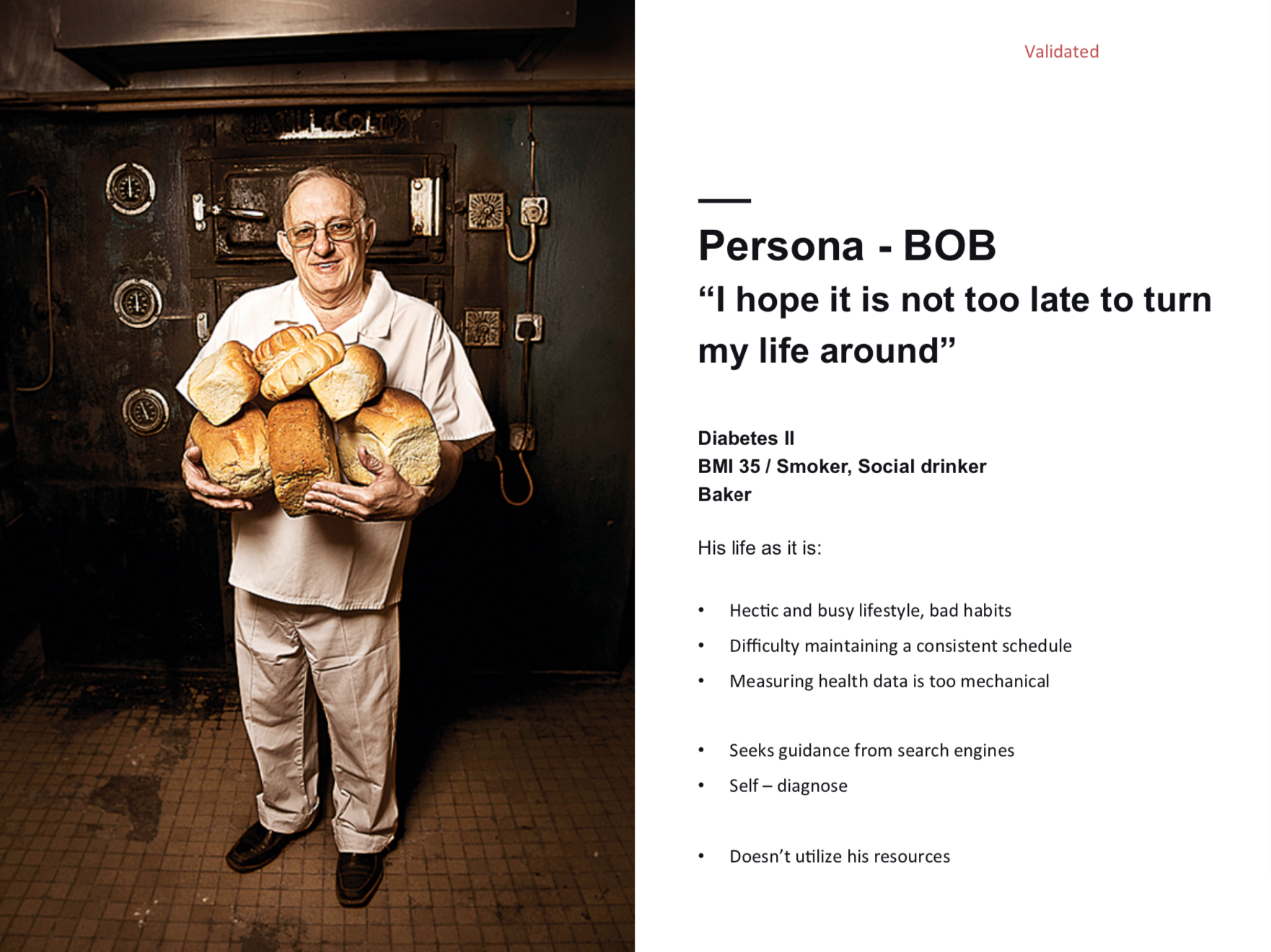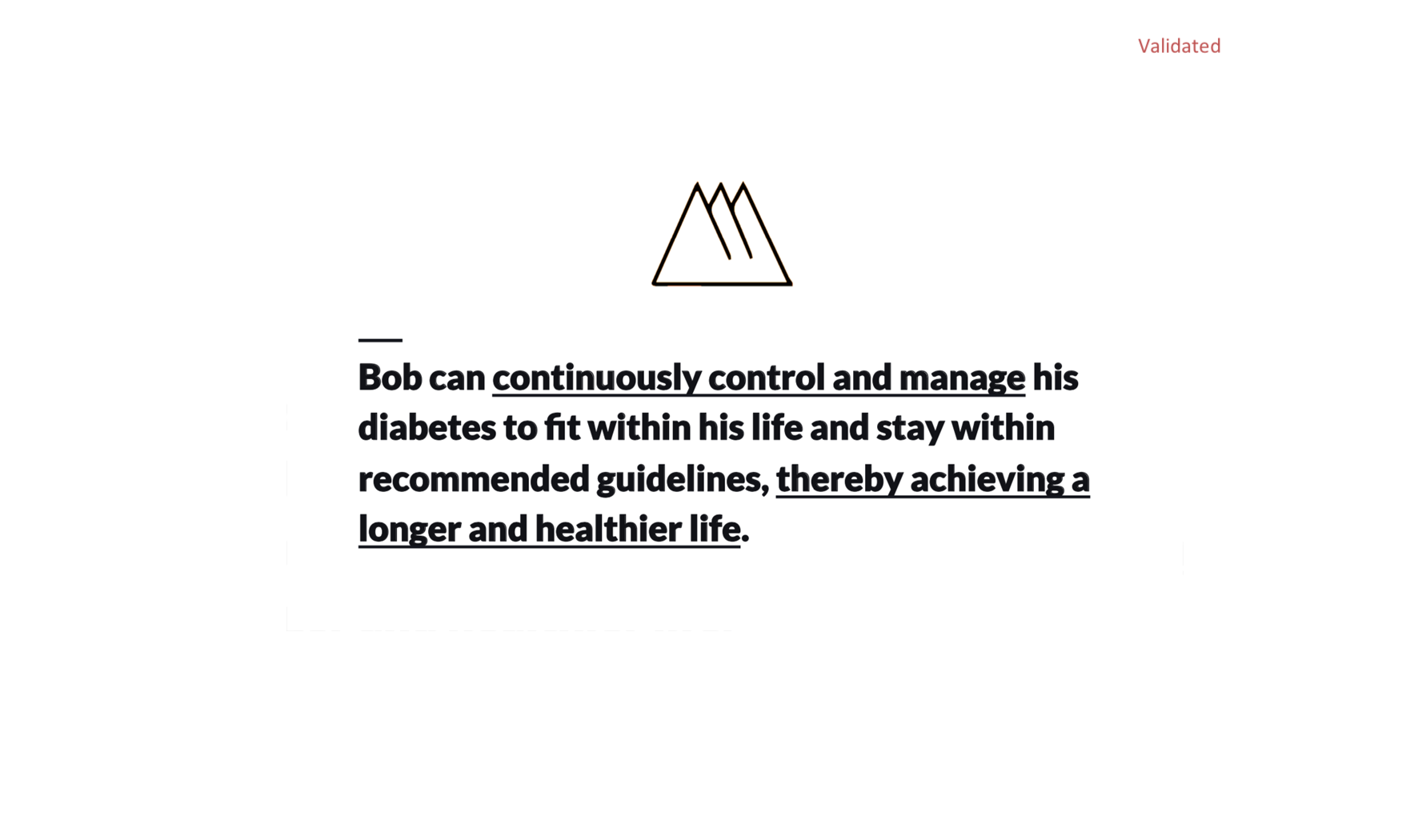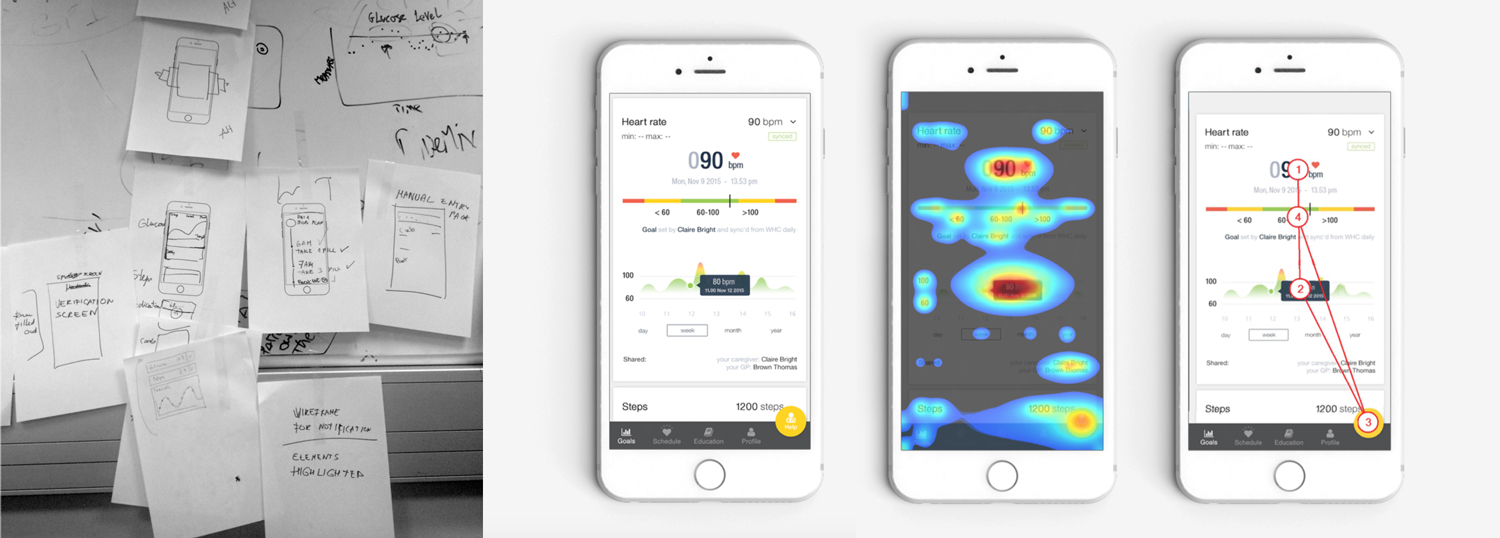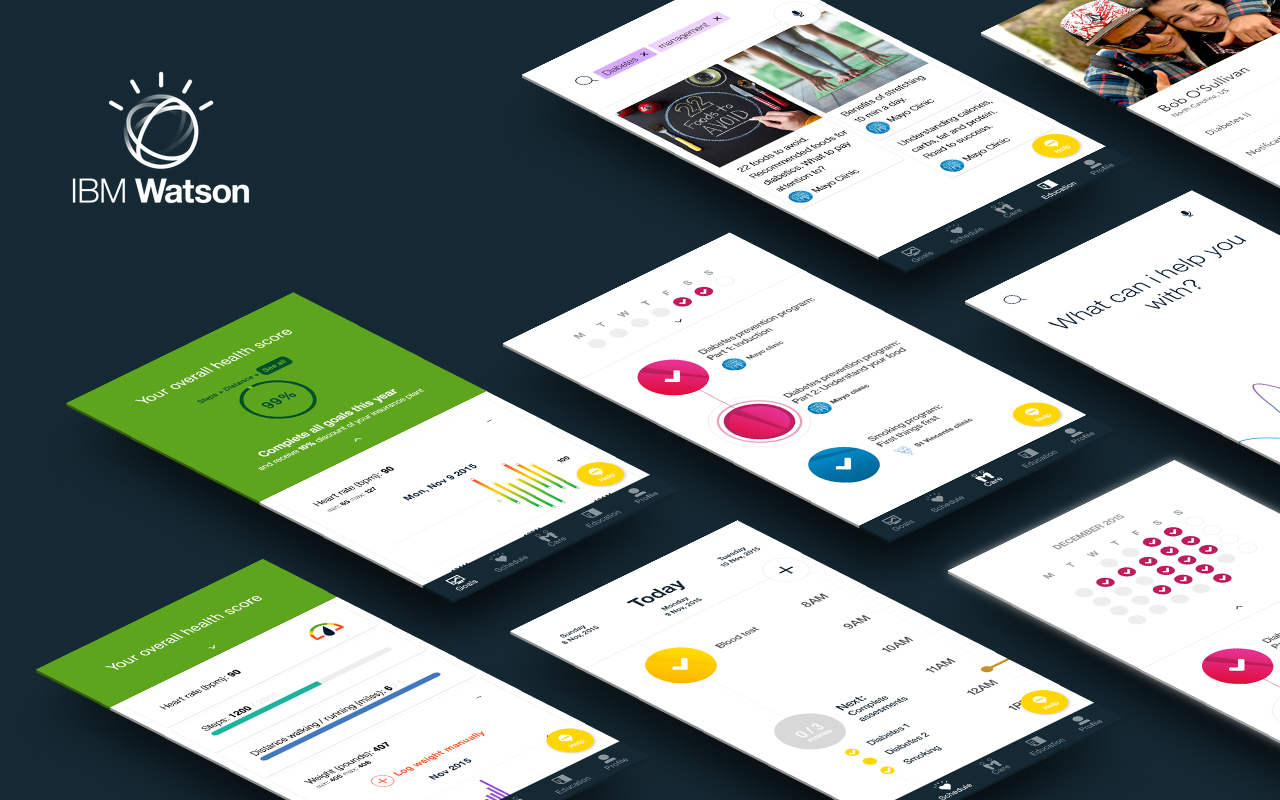IBM IIX Leading Design for Innovation teams
(Dublin, Ireland)
IBM Innovation Exchange (IIX) is an R&D based team striving to deliver products and services that make a real difference to people’s lives through ground breaking research and innovation.
Innovation team works on novel ideas that might be transformed into products if they meet nessesary criteria. IIX often works on collaborative projects managed at the Lab.
Collaborations can vary from internal to external business and design requirements can range from agency type of work, service design, to consulting or product team work.
Before IBM design language had a rebranding we worked with IBM color wheel (hence you see visual work varies from what you see now in IBM).
Each industry would select a few colors and create their IBM brand based on that (purple for finance, green for healthcare, dark blue for cloud and etc.).
As an innovation designer I have to follow each brands visual and UX patters while creating official offerings.

My role
I joined the team as an Innovation Portfolio Design Lead and managed portfolio product design along with other designers already working on it (if there were any).
The nature of design in IIX projects are closer to service design and agency design than product. Projects tend to live from a few months to a few years not a few decades so it is important to know when to let go.
My work process
• Lead the scoping, planning, and execution of research
• Facilitate research synthesis and frame insights to reframe business challenges
• Translate insights into artifacts and frameworks that illustrate the intersection of customer experience and business opportunity and inspire ideation
• Lead multi-disciplinary internal and customer teams through design thinking exercises
• Lead critique sessions with internal colleagues and external customers
• Collaborate and build relationships (users, stakeholders, product owners, devs and engineers)
• Create early feature wireframes
• Create user flows and visualise the features (keep everyone in the loop, to prevent big surprises)
• Iterate & test (user test where possible)
• Handover for implementation
• Support implementation
What was I asked to do?
• Challenge and reframe the status quo, look for an untapped opportunity
• Work with a degree of ambiguity and scope of flexibility to experiment within a design thinking framework
• Present ideas and concepts to senior executives in different forums
• Lead and collaborate with IBM bootcamp team consisting of 7 junior designers in Austin, Texas (remotely).
• Collaborate face-to-face with IBM Watson Health team in Dublin. They had an active interest in the project.
What did I inherit?
I had the opportunity to work on this project from scratch.
What did I do?
I was in charge of quantitative and qualitative research and I created a number of research assets tailored to support and guide teams.
• personas,
• hills,
• user segmentation models,
• user journeys,
• playbacks,
• wrote scripts,
• set up interviews with live users,
• conducted and synthesised interviews,
• supported research implementation in design.
• Document
• Collaborate and build relationships (users, stakeholders, product owners, devs and engineers)
• Create early feature wireframes
• Iterate & test (user test where possible)
• Create user flows and visualise the features (keep everyone in the loop, to prevent big surprises)
• Iterate & test (user test where possible)
• Handover for implementation
• Support implementation
After 4 months of intensive work on this app was live and a functional AI driven solution. The solution was aquired by IBM Watson Health and this is how I joined IBM Watson Health.
I will show you some of the work that was created during these 4 months.
It was very challenging in just 4 months to aquire end users for this solution but I managed to get an outreach of enough users to validate our assumptions.





Final design work was greeted with aplauds.


The team I was mentoring in Austin, US (7 designers) created their own take on Bob and Claire persona.
It was in our best interest to leverage junior designer group strengts and explore areas where they had an advantage on by being located in US.
After a few week project guided by Bootcamp leads and myself they delivered an explorative idea playback.